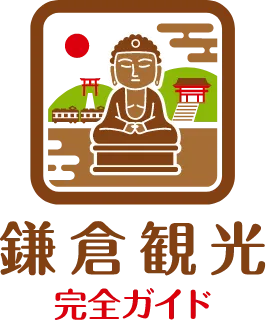Jojuin Temple (成就院)
Discover Jojuin Temple
Perched on a hill overlooking Yuigahama and Zaimokuza beaches, Jojuin Temple belongs to the Daikaku-ji school of Shingon Buddhism. Its official name is Fumyozan Horitsu-ji Jojuin (普明山法立寺成就院), and it was established in the early 13th century by Hojo Yasutoki (北条泰時), the third regent of the Kamakura shogunate. The temple grounds are also believed to be where the monk Kukai (空海), also known as Kobo Daishi, trained during the early 9th century.
Highlights of the Temple Grounds
The approach to the temple features a set of 108 stone steps, symbolizing human desires in Buddhism. As you ascend, panoramic views of the sea and mountains unfold below, offering a moment of spiritual refreshment. In early summer, around 70 hydrangea bushes bloom along the steps, creating a gentle and nostalgic atmosphere. Autumn brings a wave of hagi (bush clover), adding seasonal color to the landscape.
Blessings and Cultural Significance
Inside the main hall, the principal deity is Fudo Myo-o (不動明王), accompanied by Dainichi Nyorai (大日如来), Sho Kannon Bosatsu (聖観世音菩薩), and a statue of Kukai (空海). The “Enmusubi Fudo Myo-o” is especially revered for blessings related to love, career, academics, parenting, and protection from misfortune. The paired statues before the main deity represent romantic union, making them popular among visitors seeking relationship success.
Unique Experiences and Local Icons
The temple is also home to Koyasu Jizo Bosatsu (子安地蔵菩薩), known for blessings related to fertility, safe childbirth, and childrearing. Visitors often touch the smooth, round “Koumi-ishi” (子生み石) in hopes of receiving divine favor. Another beloved figure is the “Nade-Kawazu” (なで蛙), said to invite happiness with a kind heart and cherished for its symbolic meaning.
Omikuji, Goshuin, and Traditions
Jojuin Temple offers four types of goshuin (temple seals), including those for the principal Fudo Myo-o, the 21st station of the Kamakura 33 Kannon Pilgrimage (鎌倉三十三観音), the 13th of the Kamakura Jusanbutsu (鎌倉十三仏), and the New Shikoku East 88-Temple Pilgrimage (新四国東国八十八箇所霊場). All seals are provided in prewritten format for visitors.
Access and Opening Hours
The temple is open from 8:00 AM to 5:00 PM (until 4:30 PM from November 1 to March 1). Tripods are not allowed inside the grounds. It is a 5-minute walk from Gokurakuji Station (極楽寺駅) on the Enoden Line. Due to the steep stairs, comfortable walking shoes are recommended. For guests staying at Tosh’s Place (トシズプレイス), its close proximity allows for casual morning strolls or quiet evening visits after the day tourists have left.
Best Times and Seasons to Visit
Late May to early June offers a stunning contrast of hydrangeas and ocean views. Evenings bring softer light and particularly scenic views of Yuigahama, though it may get crowded with photographers and sightseers. To avoid crowds, early mornings or weekday visits are ideal. In autumn, the hagi bloom beautifully, making the temple perfect for a peaceful seasonal walk.
Nearby Hidden Gems Within Walking Distance
- Gokuraku-ji Temple (極楽寺): A tranquil temple in a quiet neighborhood, known for its mossy path and seasonal scenery.
- Goryo Shrine (御霊神社): Famous for its unique setting beside the Enoden tracks and dedication to Kamakura Gongoro Kagemasa (鎌倉権五郎景政).
- Hoshi-no-i Well (星ノ井): One of the “Ten Wells of Kamakura (鎌倉十井),” it offers a quiet route through history and nature.
- Coastal Promenade: A scenic seaside walkway leading to Yuigahama and Zaimokuza beaches.
Recommended For
- Those seeking romantic or spiritual blessings: Access the power of Fudo Myo-o and Koyasu Jizo Bosatsu.
- Visitors craving peaceful history: Mornings and evenings are the quietest times to explore.
- Nature lovers: Enjoy the changing beauty of hydrangeas, hagi, and sea views through the seasons.
- Guests at Tosh’s Place (トシズプレイス): The self-guided nature of this unmanned hotel makes it easy to explore like a local.
Wrap-Up: A Place of Wishes and Scenic Peace
Jojuin Temple brings together breathtaking ocean views, centuries of spiritual history, and seasonal beauty. With flexible timing from nearby Tosh’s Place, this destination offers more than sightseeing—it’s a soulful journey into the heart of Kamakura.
